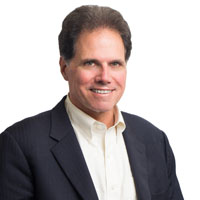The New America Foundation's Open Technology Institute joined Public Knowledge in submitting comments to the Federal Communications Commission (FCC) on an amendment of the Commission's rules on Licensing Models and Technical Requirements in the 3550-3650 MHz Band. Read the full text of the comments here (pdf)
The Open Technology Institute (OTI) and Public Knowledge (PK) applaud the Commission for its innovative and balanced proposal to unlock the tremendous potential of the unused spectrum in the 3.5 GHz band. OTI and PK have enthusiastically supported the Commission’s proposal to create a Citizens’ Broadband Service in the 3.5 GHz band, filing comments and reply comments previously on behalf of the broader Public Interest Spectrum Coalition (PISC). We view the Revised Framework in the Public Notice as another positive and critical step in a long-term effort to reorient the nation’s spectrum policy toward use rather than exclusively reserved non-use of capacity on the public's infinitely-renewable spectrum resource.
OTI and PK strongly support the Commission’s proposal to implement a three-tier access framework that ensures a robust amount of spectrum for General Authorized Access ("GAA") on a nationwide basis. A three-tier access system managed by one or more neutral, third-party database managers (a Spectrum Access System or "SAS") strikes the right balance between protecting incumbent operations and facilitating a diverse range of private sector small cell deployments.
We agree with the Commission’s proposal to reserve a substantial portion of the band for GAA users in every market. The certainty of markets of national scope and scale for chips, devices, applications and services will be essential to encourage investment and deployment. It is also a likely prerequisite to a mass market for interoperable and dynamic frequency devices that can operate on either a Priority Access ("PA") or a GAA basis. OTI and PK believe that at least 50 percent of the bandwidth available to PA and GAA users in each local market should be reserved for GAA, at least initially. Because the SAS can add or withdraw permission for access to GAA spectrum at any time, if the unproven model of licensing small cells proves far more productive than GAA, the Commission can at any point increase the relative share of the band allocated for PA licenses ("PALs") in the future without stranding GAA devices or investment.
The Spectrum Access System (SAS) will also enable opportunistic GAA use of unused spectrum across the entire band, including Priority Access spectrum that has not been assigned or that is not in actual use. We agree that this "use-it-or-share-it" concept is an essential feature of the Revised Framework. Licensees lose no rights whatsoever and bear a de minimus burden to simply inform the Commission and/or the SAS prior to commencing substantial service in a local area, so that all GAA devices can be immediately denied permission to operate on those frequencies. This notice could be given 30 days or more in advance of actual use. This approach will encourage PA licensees to make actual use of spectrum they reserve without the need to impose strict construction or service requirements. Opportunistic GAA use also directly addresses the problem that arises because PALs will be cost-free in the absence of competing applications, encouraging speculators and brokers to roll up exclusive licenses for not just a one-year term, but for the "multiple consecutive years of PAL rights." In the absence of a very significant application and/or annual use fee, only Priority Access licensees that acquire their PALs through competitive bidding will have any inherent incentive to deploy services quickly, or even at all.
OTI and PK generally support the Revised Framework’s "building block" approach to Priority Access Licenses (PALs). We agree that open eligibility, very granular license areas and a lease-like system of one-year, non-renewable license terms is an appropriate regime for this small cell band. We recommend that the Commission adopt a number of additional features intended to accommodate a very diverse range of users and to avoid foreclosure or warehousing. We recommend that the Commission allow a licensee to aggregate no more than three one-year terms at a time – the current year plus two additional years – and to license no more than 20 MHz in a given license area. We also suggest the Commission consider whether census Block Groups (which are one-third the population of a census tract, on average) would confer the same advantages while facilitating "micro-targeted network deployments" and "intensive and efficient use of the spectrum" to a greater degree.
Finally, OTI and PK agree that equipment certified to operate on the band, whether on a GAA or a PA basis, should be capable of dynamic frequency selection across the entire band based on SAS channel assignments that could change depending on location, frequency or time.
